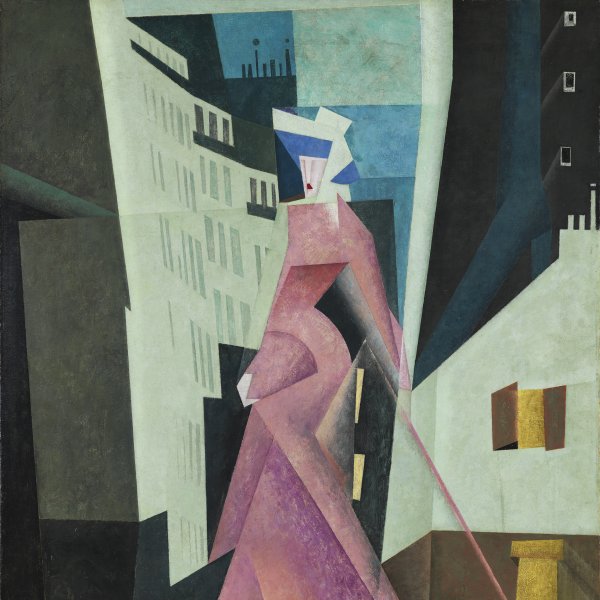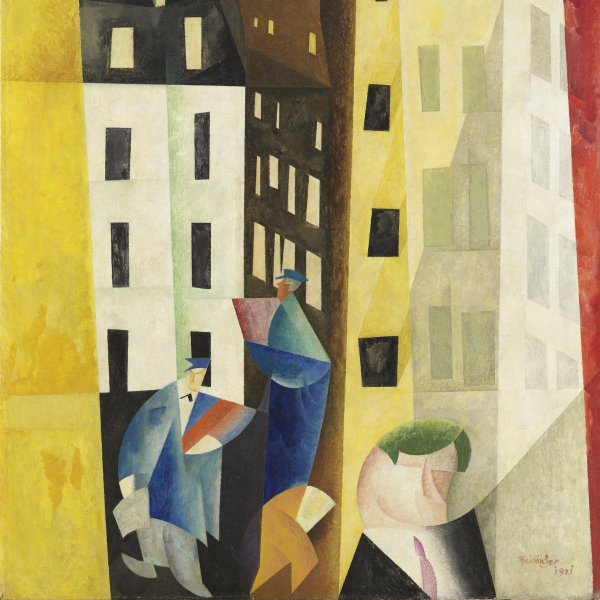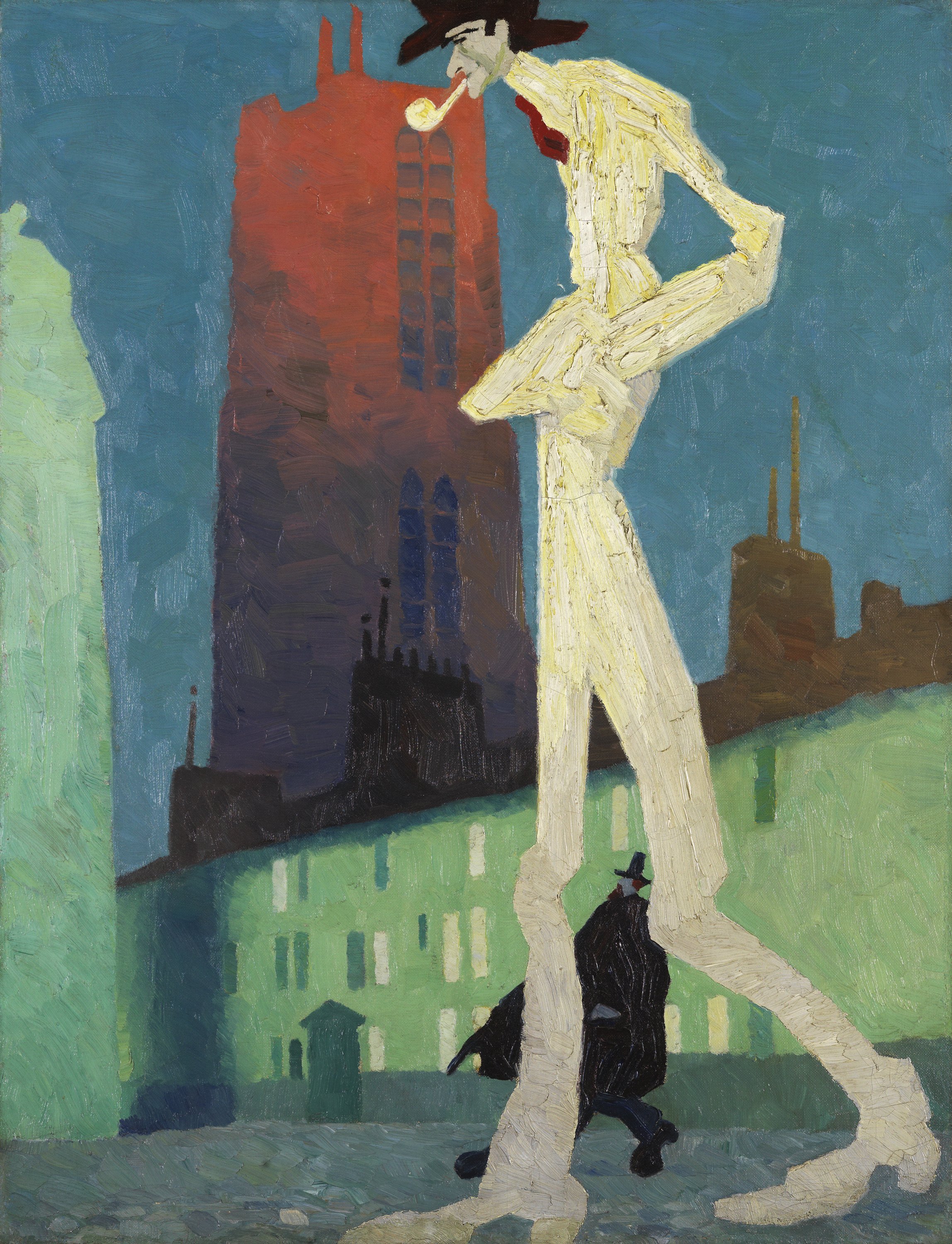The White Man
In July 1906, Feininger left Berlin for a protracted stay in Paris. Having worked as a caricaturist for a succession of mainly humorous or satirical German magazines, it was perhaps natural that he should again gravitate towards literary and journalistic circles. Among the Parisian magazines for which he provided illustrations was Le Témoin, founded the same year by Dagny Björnson-Langen and the designer Paul Iribe. One of these illustrations was a drawing, compositionally identical to The White Man, entitled "Les regrets de M. Hearst, " which appeared in one of the first issues of Le Témoin in autumn 1906.
The White Man, which incorporates even the smallest details of this drawing, was completed in Paris a year later, in autumn 1907. It is among Feininger's earliest paintings in which he takes the human figure as his theme. In a letter written shortly after his arrival in Paris, he affirmed his determination to devote himself henceforth more to painting and less to drawings and caricatures. According to an old inscription, the artist considered this to be the second painting of his Parisian period, by which he presumably meant his second painting on canvas, discounting an earlier series of small-scale, Impressionistic landscapes done earlier the same year.
The title given to the published drawing has provoked speculation about the meaning of the painting but was almost certainly invented by the magazine's editor. Although the figure of the man in a white suit with hat and pipe may well have suggested the image of an American newspaper baron, it is most unlikely that Feininger intended it as a portrait of his compatriot William Randolph Hearst. More plausible is the suggestion that the "white man" may have been a satirical self-portrait. There is an undeniable resemblance between the spindly figure with its exaggeratedly long legs and enormous feet and the artist's own depiction of himself in the Chicago Sunday Tribune (29 April 1906) introducing the paper's new "comic supplement" The Kin-der-Kids. On the other hand, Ulrich Luckhardt, the most recent author to have written extensively about Feininger, emphasises that there is "no supporting evidence" to prove that the artist painted The White Man as a representation of himself.
Because of the discrepancy in scale between the two figures, it is easy to overlook altogether the smaller "black man" who appears in the background scurrying along between the legs of the purposely striding principal figure, as if bent on distracting him or tripping him up. If, however, the suggestion that the "white man" was conceived as a self-portrait is at least plausible, then the "black man" surely represents some sort of alter ego, perhaps signifying the darker side of the artist's personality. That Feininger's drawings and caricatures of this pre-war period did sometimes have a more profound psychological significance is shown by other, stylistically related works, for example the ink drawing Melancholy of 1911.
As Luckhardt points out, the background against which the figures are set depicts a specific Parisian location: a view along the rue Clovis, with the distinctive outline of the Tour Ste. Geneviève seen in the middle distance. It is based on one of Feininger's rapidly executed "nature notes, " a pencil study dated 8 November 1906, in which the artist has faithfully captured the same architectural details.
Peter Vergo





